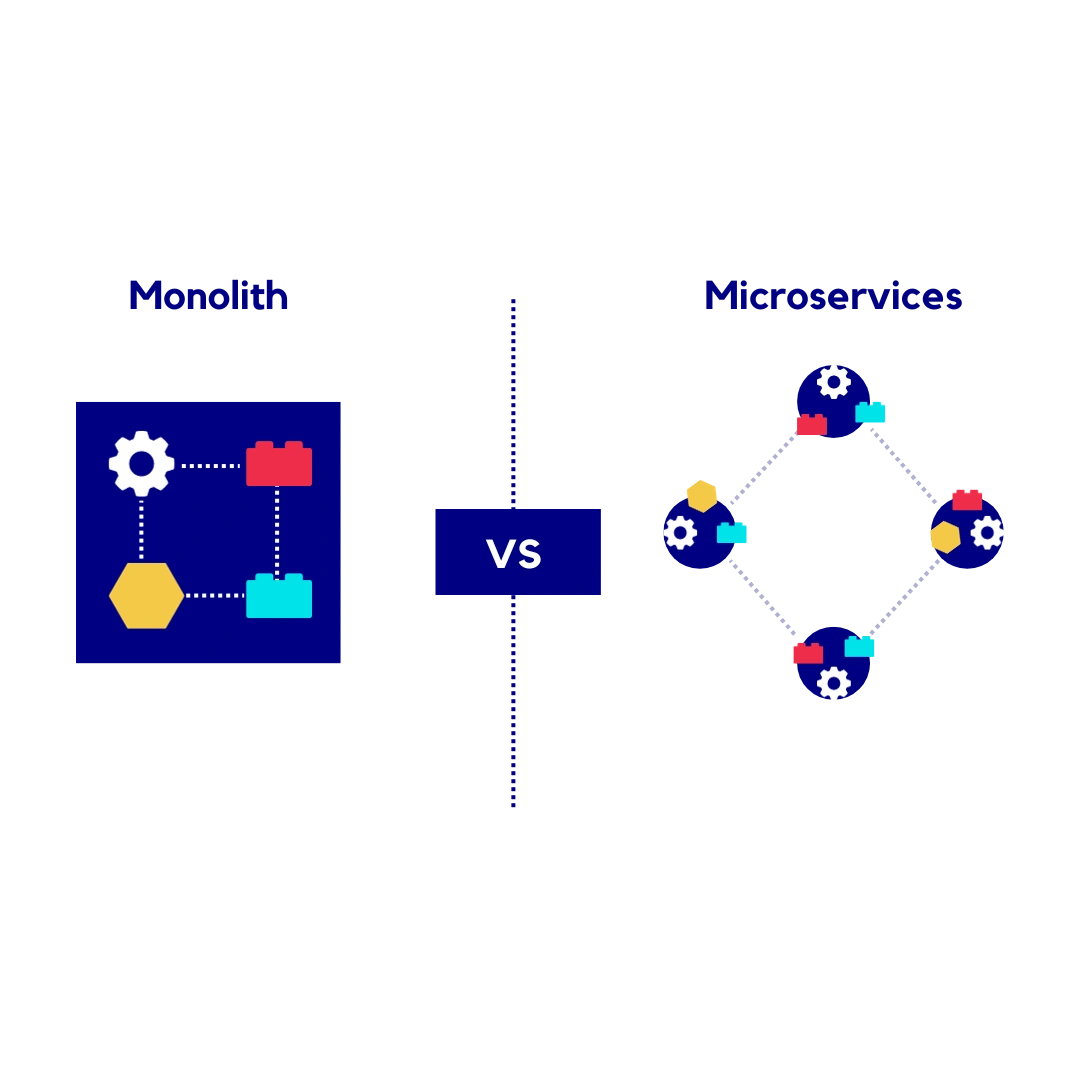Years back, monolith architecture was the go-to choice in developing software applications. Still, when the need for a more robust, scalable, efficient, and secure system arose, the industry saw a paradigm shift toward microservices architecture. The journey from monolithic applications to agile microservices has been nothing short of transformative, thanks to DevOps methodologies and now the shift to platform engineering. Today, we delve deep into the core of this transformation, explore the key architectural paradigms, and understand how it all fits into the bigger picture of platform engineering and DevOps. Furthermore, we'll uncover the profound significance of the evolution of platform engineering and the pivotal role of Atmosly, a solution that simplifies DevOps for businesses.
From DevOps to Platform Engineering; the backgrounds
Platform engineering, a pivotal discipline dedicated to crafting and maintaining internal developer platforms, dates back to the early days of software development, where a single gatekeeper controlled essential resources, leading to inefficiency. While DevOps aimed to bridge the gap between development and operations, it couldn't address its aim due to the complexity of cloud-native technologies and the shift from monolith to microservice systems. Hence, the introduction of platform engineering.
Platform engineering focuses on designing toolchains and workflows that create self-service capabilities for software engineering organizations. Its core is an Internal Developer Platform (IDP) integrating technologies to simplify developers' work. It builds and provides a platform for DevOps, Site reliability engineers, Product Managers, and Developers to collaborate, deploy their applications, clone environments, and test new features autonomously, and securely while complying with software and microservice architecture best practices. Thanks to Atmosly and other platform engineering portals, there are faster release cycles, accountability, and better team collaboration.
Monoliths vs. Microservices: Unraveling the Basics
What are Monolithic Applications?
Monolithic applications have been the dominant software architecture for many years. This approach tightly integrates all components and functions into a single codebase. The application's front-end, back-end, and data layer are all combined into a cohesive unit, often built as a single executable.
The monolithic model was initially the go-to choice for developers because of its simplicity. It provided a structured way to create applications where everything was in one place, making development, deployment, and scaling relatively straightforward. However, as applications grew more complex, monoliths started to show their limitations.

Monoliths vs. Microservices
Limitations of Monoliths Architectural Applications
Monolithic applications, the architectural giants of the past, were characterized by their bulky, rigid structure. This architectural model had its challenges, and the metaphorical library had its share of issues as shown below:
- Inflexibility: Monoliths were bulky, and rigid, and required rewriting the entire codebase for even small changes, hindering adaptability.
- Scaling Issues: The bulky nature of codebases makes scaling difficult and if it must happen, there would be more losses and costs.
- Downtime Risk: Since there is usually a massive code base for a single application, there is usually downtime when there is a need for maintenance.
- Technology Lock-In: Monoliths limited flexibility by locking users into a single technology stack. Developers would most likely master a particular task and even have comprehensive details and understanding of the whole application before attempting to make any changes to the codebase, operation, and anything necessary.
What are Microservices?
In response to the limitations of monoliths, microservices architecture emerged as a paradigm shift. It breaks down applications into smaller, loosely coupled services, each responsible for a specific function or feature. These services communicate via APIs, enabling independent development, scaling, and maintenance. Imagine a bustling food court where each vendor specializes in a specific cuisine – whether it's pizza, sushi, or tacos. These vendors, like microservices, operated as small, independent units that contributed to the diversity and efficiency of the entire court.
Significance of Microservices:
- Enhanced Flexibility: Microservices provide the flexibility to add new features and evolve your software system to meet changing requirements. Developers can make changes without overhauling the entire application as seen on monoliths.
- Improved Reliability: Microservices offer enhanced reliability by isolating failures. If one microservice encounters an issue, it doesn't bring down the entire system. It's similar to having multiple distributed power sources in a building; if one source experiences problems, only a portion of the building will be affected and the rest will continue to operate as usual.-
- Streamlined Deployment: Microservices enable the independent deployment of each service. This means you can add new services or update existing ones without taking down the entire system. It's akin to renovating a single store in a mall without having to close down the entire shopping complex. This continuous operation minimizes downtime.
- Scalability: Microservices support individual scaling, meaning you can allocate resources precisely where needed. If one part of your application experiences a surge in demand, you can scale that specific microservice without affecting others.
- Technology Diversity: Microservices architecture promotes innovation and efficiency by allowing you to choose the best technology for each specific task, resulting in a more versatile and capable system. Unlike monoliths, developers can select the right technology for every service on the system.

Empowering Engineers to Deploy Microservices Applications
In the midst of this transformative shift, platform engineering tools play a crucial role, enabling more and more microservice applications and robust software delivery processes. Deployment processes are characterized by in-consistent environments, the complexity of modern Infrastructure, fragmented toolchains, best practices, and developer productivity which Atmosly is currently working to solve. Atmosly simplifies the DevOps process and other software delivery tools by allowing the integration of various tools. It empowers engineers in the following ways:
- Simplified Deployment: Atmosly offers an intuitive interface for deploying and managing microservices, making it accessible to team members at all skill levels.
- Observability: It provides comprehensive visibility into the performance of microservices, ensuring high standards of quality.
- Auto-Scaling: Atmosly automates the scaling of microservices, adjusting resources to match demand, and ensuring optimal performance without manual intervention.
- Security: It incorporates security best practices, safeguarding the system from potential threats or vulnerabilities.
- Robust Continuous Deployment: Atmosly streamlines application releases across various environments with its efficient Continuous Deployment solution, integrating seamlessly with DevSecOps to ensure both rapid delivery and heightened security in every deployment phase.
- Self-Service: Atmosly allows individual microservice owners to manage their operations while maintaining quality and consistency across the entire system. This balance between autonomy and governance streamlines the development process.
Conclusion
This transformation from monolithic applications to microservices signifies a significant milestone in the evolution of platform engineering. Microservices offer unmatched flexibility, scalability, and resilience, making them a cornerstone of digital transformation. As the digital landscape continues to evolve, embracing microservices and tools like Atmosly is the key to staying competitive and driving innovation in the digital era.
This journey represents an evolution that emphasizes the principles of collaboration, automation, and infrastructure-as-code to enhance the efficiency of software development and operations. It's not just a trend; it's a necessity in a world where agility, scalability, and efficiency are paramount.






